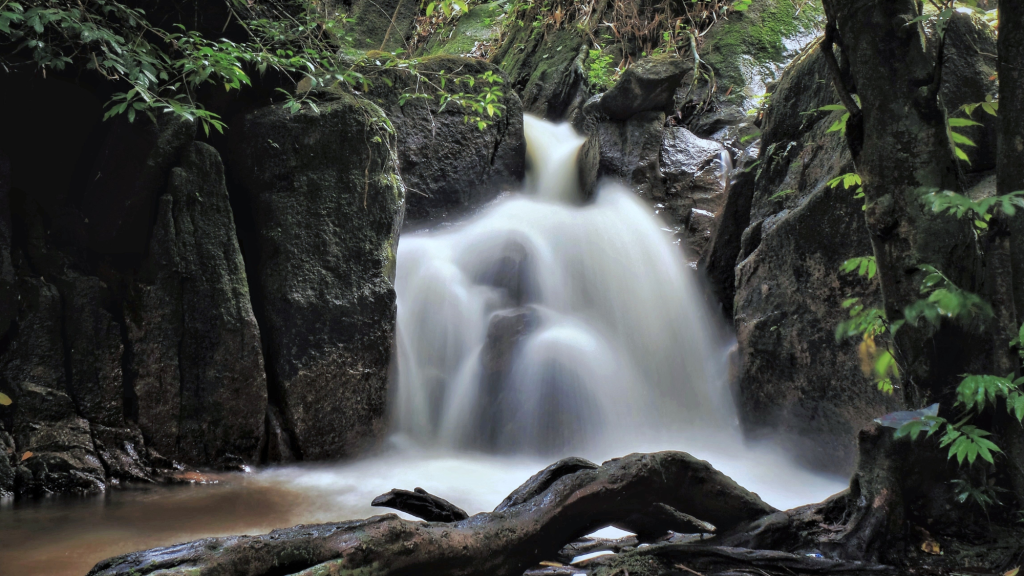Evidence that non-white communities in Canada are being used as dumping grounds for heavy industry is not hard to find. But many Canadians don’t want to acknowledge it.
“We have an image across the world of people who believe in human rights, who believe in equality,” said Ingrid Waldron, an associate professor at Dalhousie University in Halifax and author of There’s Something In The Water: Environmental Racism in Indigenous & Black Communities. “We don’t want people to know about our dirty secrets.”
Videos by VICE
Though concern about racism is rising among Canadians following this summer’s Black Lives Matter protests against police brutality—about 60 percent now see it as a serious issue, according to recent polling—environmental advocates say the country has only barely begun to reckon with the health-destroying pollution it’s inflicted on people of colour.
“If we speak up, we’re dismissed or ignored,” said Lorene Oikawa, president of the National Association of Japanese Canadians, during a discussion about environmental racism hosted this week by the B.C.-based group West Coast Environmental Law.
Egregious examples include the Ontario government knowing for years that the Grassy Narrows First Nation was being poisoned by mercury but doing nothing initially to stop it; members of the Aamjiwnaang First Nation suffering higher risks of cancer due to being surrounded by dozens of refineries and chemical plants near Sarnia; or a toxic waste dump built near the Black community of Shelburne in Nova Scotia creating a “community of widows.”
Sometimes environmentally racist decisions are less immediately obvious.
When Alberta passed Bill 1 earlier this summer, which can impose fines of $25,000 and up to six months jail time for trespassing on “essential infrastructure” like railways, highways and oil and gas sites, Premier Jason Kenney said it was about combatting “lawless and illegal” protests.
But the protests Kenney was reacting to were led by First Nations worried about new fossil fuel projects harming the health of their communities.
“Allowing the bill to pass will serve to erode individual rights, unfairly target Indigenous Peoples, and has no place in a democratic society,” Assembly of First Nations Alberta Regional Chief Marlene Poitras said at the time.
Some white Canadians struggle to relate to the experiences of communities polluted by factories, refineries, and other industrial operations, advocates argue, because that pollution is often felt far from major population centers.
West Coast Environmental Law lawyer Eugene Kung gave the example of First Nations near Alberta’s vast oil and gas developments facing higher than normal levels of rare cancers. “If [the city of] Edmonton was downstream of the tar sands rather than Indigenous communities how might that development have gone differently?” he said during the panel.
Instead, the people who benefit economically from polluting industries don’t have to think about the consequences. “It’s not in your backyard so you don’t really have to care,” Waldron said. “When [non-white people] share their concerns, it’s hard for you to empathize. All that contributes to why some people don’t think environmental racism exists.”
Several years ago, a city councillor in Shelburne, Nova Scotia, apologized after accusing a Black resident of exaggerating the racial impacts of a toxic dump that operated near a predominately Black neighbourhood in the city for more than 60 years. “I think it’s time to stop trying to find fault, and push blame,” Rick Davis wrote on Facebook. “I think it’s time to stop playing the racism card. It’s old.”
Yet the siting of that particular dump appeared to be no accident. Research done by the Environmental Noxiousness, Racial Inequities & Community Health Project shows that dozens of toxic facilities across Nova Scotia have been built near Black and Indigenous communities. (You can check out an interactive map here).
This type of work is much more common in the U.S., where for decades researchers and activists have documented the racist zoning decisions and other policies that have led to Black people and other non-white Americans breathing in toxic fumes and drinking contaminated water. Fixing this racism is now a big part of the U.S. election, with Joe Biden promising to spend hundreds of billions of dollars cleaning up the air and water of disadvantaged communities.
Canada appears to be much further behind. “The Canadian Environmental Protection Act is Canada’s main pollution prevention law and it doesn’t mention environmental justice, human rights, or vulnerable populations,” West Coast Environmental Law lawyer Rayanna Seymour-Hourie, who is from the Anishinaabe First Nation, said during the panel talk.
But that could soon be changing. When Parliament resumes this fall, one of the pieces of legislation it will consider is a private member’s bill introduced by Nova Scotia Liberal MP Lenore Zann known as the National Strategy to Redress Environmental Racism Act. Bill C-230, which has the support of former Green Party leader Elizabeth May, would create a national strategy for alleviating the pollution pumped into non-white areas.
“This is really key,” Waldron said. “What’s exciting to me is the possibility of taking the first steps in addressing environmental racism across Canada.”
Follow Geoff on Twitter.
More
From VICE
-

A waterfall in Sungai Tekala Recreational Forest, Hulu Langat, Selangor. Photo: Zaki Mohamed / Getty Images -

Photo: Catherine Falls Commercial / Getty Images -

Photo: RYosha / Getty Images



